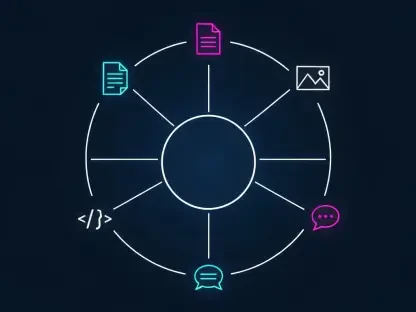In the technological landscape of today, email security has faced unprecedented challenges due to the surreptitious exploitation of Cascading Style Sheets (CSS) by cybercriminals. From mid-2024 through early 2025, these attackers have employed sophisticated techniques involving benign-looking CSS properties to infiltrate email systems, bypass spam filters, and track user actions covertly. This emerging trend in cyber threats highlights the critical need for enhanced vigilance and advanced protective measures in maintaining robust email security.
Techniques and Methods of CSS Exploitation
Cybercriminals have innovated several techniques to exploit CSS in emails, one of the most common being “hidden text salting” or HTML poisoning. This method involves embedding invisible text within an email to confuse security scanners and evade detection. Techniques such as using text-indent: -9999px and exceptionally small font sizes are utilized to hide gibberish text, making it almost impossible for traditional filters to identify malicious content. These tactics enable attackers to mask their intent effectively and potentially deliver harmful payloads without raising red flags.
Moreover, researchers have uncovered the use of the opacity property to render text transparent, further complicating the detection process. Cybercriminals leverage this property to make malicious text practically invisible, ostensibly maintaining the benign appearance of the email’s content. The sophistication of these methods underscores the necessity for improved email security mechanisms that can discern between authentic emails and those that use CSS properties for nefarious purposes. The ability to detect and neutralize such hidden threats is paramount in protecting recipients from potential harm.
CSS is not only being exploited to hide content; malicious entities are also utilizing CSS to track user behavior without the need for JavaScript, which is often blocked by email clients. By employing CSS media queries, cybercriminals can gather detailed information on user actions. These actions include discerning when recipients open or print emails, identifying the user’s color scheme preferences, determining the email client in use, and assessing the operating system based on available fonts. All this information can be used to craft highly personalized phishing attempts or to target specific vulnerabilities in systems.
Practical Examples and Mitigation Strategies
To illustrate, attackers have been known to use CSS to load resources based on screen size and determine operating systems through specific fonts. For instance, the presence of “Segoe UI” font indicates a Windows operating system, while “Helvetica Neue” suggests macOS. This information is invaluable to cybercriminals, allowing them to tailor their phishing campaigns with alarming precision. Personalized attacks are more likely to succeed, as they appear more credible to the target. The gathered data can also be used to pinpoint system vulnerabilities, adding another layer of danger to these sophisticated phishing attempts.
The need for robust mitigation strategies in this context cannot be overstated. Security experts advocate for advanced filtering mechanisms capable of detecting hidden content and evasion techniques employed through CSS. Email privacy proxies, which convert CSS rules into style attributes and rewrite remote resources, can significantly impede tracking efforts. Organizations are encouraged to employ comprehensive email security solutions with AI-driven detection capabilities to effectively combat these advanced attacks. An adaptive and proactive approach is crucial in staying ahead of these ever-evolving threats.
Ensuring up-to-date security systems and employee awareness is also vital in the broader strategy to counter CSS exploitation. Regular training on recognizing suspect emails and understanding the underlying threats posed by advanced CSS techniques can further strengthen an organization’s defense. Coupled with robust technological solutions, informed and vigilant users represent a formidable line of defense against cybercriminals exploiting CSS to execute their malicious objectives.
Conclusion
In today’s technological world, email security faces new, significant challenges due to the innovative exploitation of Cascading Style Sheets (CSS) by cybercriminals. Between mid-2024 and early 2025, these attackers have used advanced methods involving harmless-looking CSS properties to breach email systems, dodge spam filters, and discreetly monitor user behaviors. This rising trend in cyber threats emphasizes the urgent need for heightened vigilance and the implementation of cutting-edge protective strategies to uphold robust email security. Email platforms must now integrate sophisticated detection systems to identify and neutralize these CSS-based threats promptly. As technology evolves, so do the tactics of cybercriminals, making it crucial for both individuals and organizations to stay ahead with continuous education and updated security protocols. In an era where email is a vital means of communication, understanding and addressing these vulnerabilities is more important than ever to safeguard sensitive information and maintain privacy.









